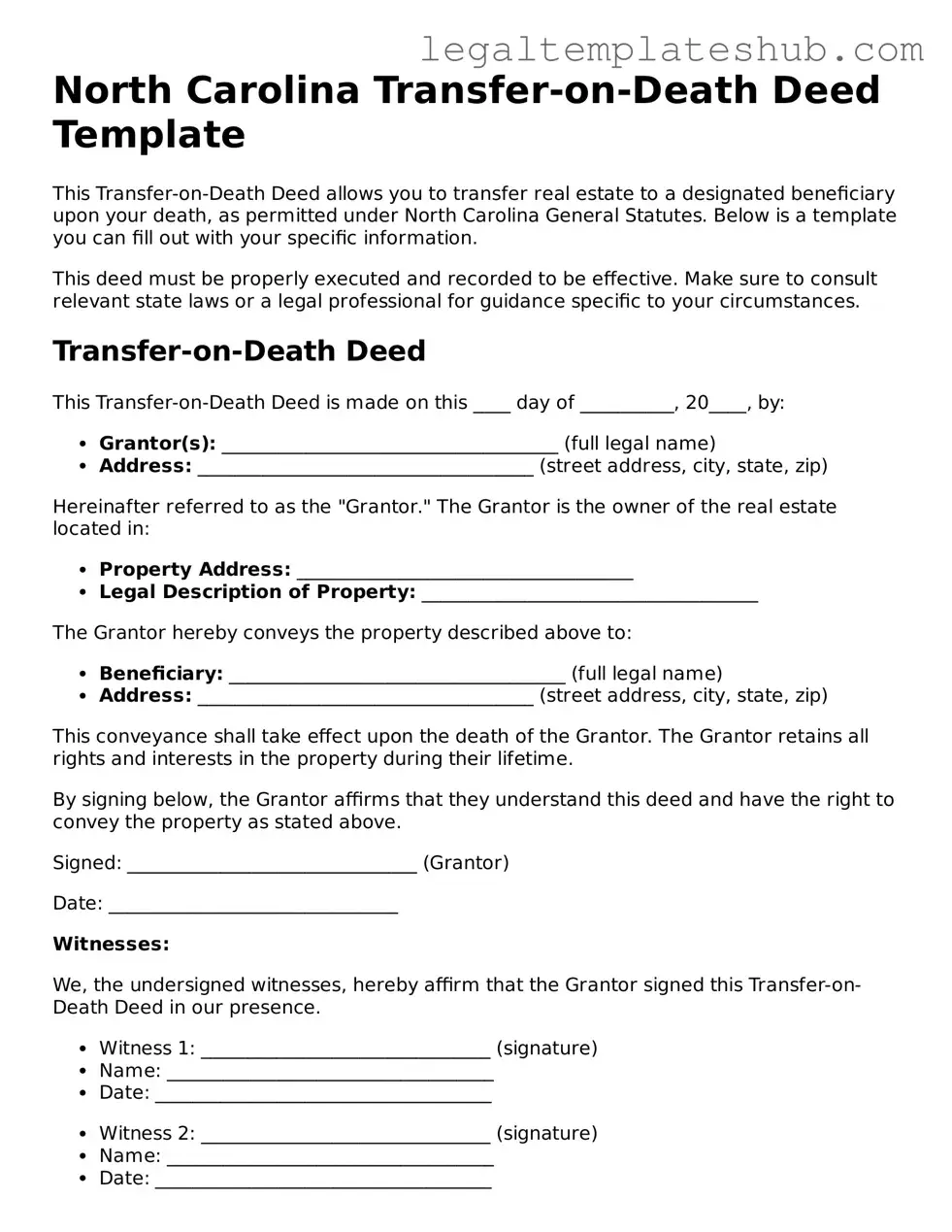Printable Transfer-on-Death Deed Document for North Carolina
The North Carolina Transfer-on-Death Deed form is a legal document that allows property owners to designate a beneficiary who will receive their real estate upon their passing, without the need for probate. This form provides a straightforward way to transfer property, ensuring that your wishes are honored and your loved ones are taken care of. To begin the process of securing your estate, consider filling out the form by clicking the button below.
Access Editor
